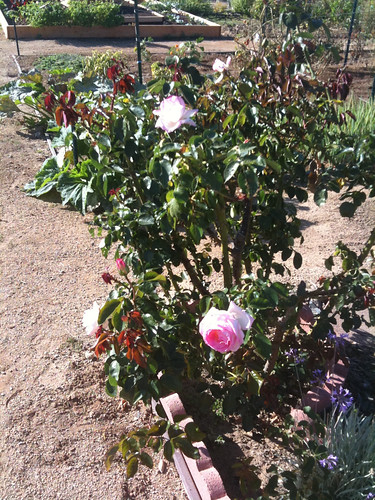Organic gardening is a movement that is rapidly gathering satisfied followers. The easy to follow advice in this article will show you how to get out there and start planting. Continue reading to uncover a number of effective tips for growing an organic garden you can be proud of.
If you have an organic garden and children, plant some everbearing strawberries for them. Children will be more willing to help you if they can pluck their own fruit from the garden.
Add aspirin to your plants to help them fight sickness. An aspirin and a half, combined with a couple of gallons of water, will do amazing things for your plants. You can simply spray them with the mixture to help aid them in fighting off diseases. The process can be repeated every three weeks or so.
After seeds have sprouted, they require less warmth than they did prior to sprouting. Your seedlings should be moved away from any heat source. You must also take away plastic films from your containers in order to keep the warmth and humidity out. Check on your seeds periodically to make sure you know when to remove the films.
To avoid tracking the mud and dirt that will get on your gardening shoes, use plastic bags. When you do this, your flow stays going, and you can just get right back out to your garden and finish quick.
Pine can make a great mulch. Some plants have a naturally high acidic level, and therefore like acidic soil. Pine needles to line the bed of your garden are easy to find for these kinds of plants. Using several inches of needles to cover your beds provides acid for the soil as they begin to decompose.
Make sure you consider adequate spacing when planting your garden, so that each plant is given room enough to grow and flourish. Leave a little more space than you think your full grown plant will need to make up for overgrowth. Beyond just the physical space that the plants will need, you should also consider the airflow that the plants will require. Make sure that you map out your garden layout beforehand and place your seeds with an adequate amount of space in between each.
Use equal parts of green and dried plant material in your compost pile. Add grass clippings, waste from fruits and vegetables, leaves, and weeds for the green materials in your compost pile. Dried plant material, however, can include items such as cardboard, sawdust and shredded paper. Never put meat in your compost or even the waste from your family pets. These can harbor diseases that won’t be killed by the composting process.
When planting seeds into a container, the depth of your planting should be three times bigger than the seed. However, you should be aware that certain seeds should not be covered at all because they are required to be in the sunlight. Some examples are petunias and ageratum. Always be sure to check online or with the company you’re purchasing the seeds from as to their sunlight needs.
If you’d like to create a raised bed, use materials like brick, stone, or untreated wood. If using wood, make sure it’s naturally rot resistant and untreated. Some good choices you might consider are locust, cedar, and cypress. In order to avoid toxic substances from getting into the ground and perhaps into your vegetables, avoid using treated wood to enclose or demarcate different sections of your vegetable garden. If you have built a bed with treated lumber already, use a barrier such as plastic to line the bed.
One way to profitably sell products from your organic garden is to be a credible organic gardener. Get organically certified. This will up your sales and prove to your loyal customers that what they have been getting is only the best that you possibly could get.
An organic garden takes time and patience, as we have previously advised. Take the information contained above as an example. If you can use these tips to your advantage, you can take the guess work out of an otherwise complicated venture. The tips in this article will lead to great success no matter which varieties you choose to grow.
–
